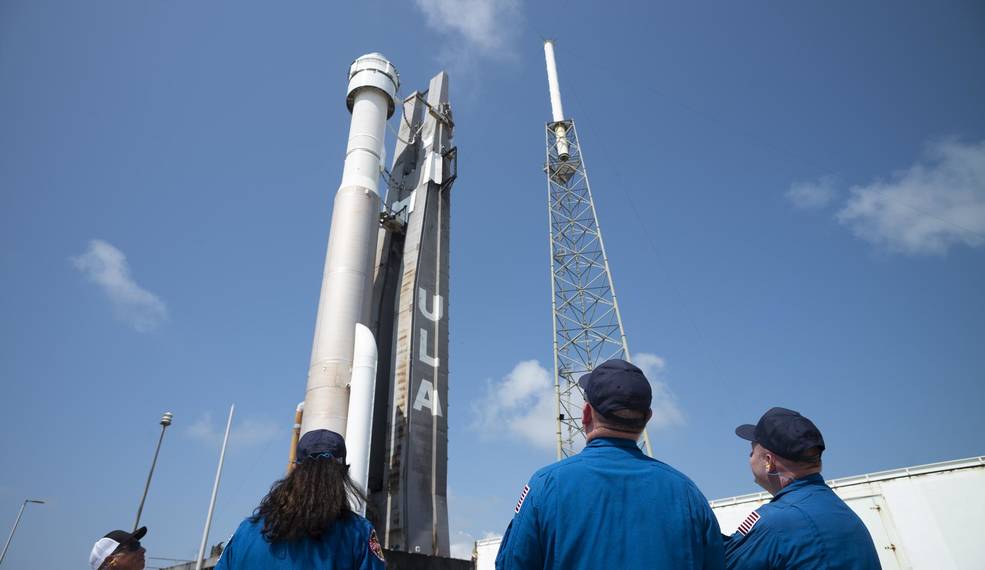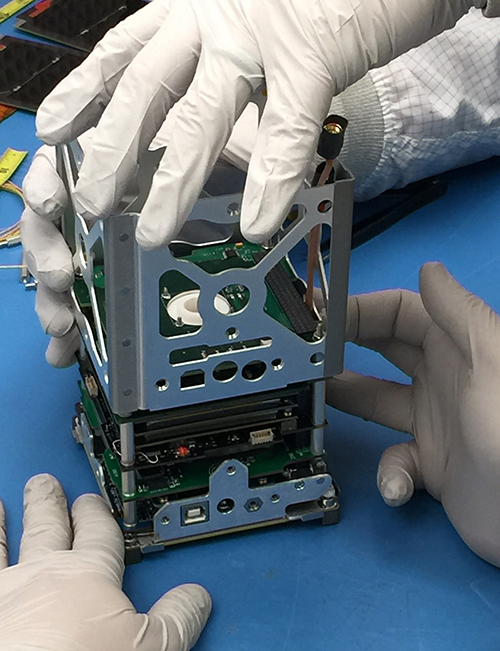We’ve always analyzed the 3D printing market, focusing on what needs to change to find more applications, become more cost-effective, and increase our yield. However, consider a thought experiment where we reverse this perspective. What if we explored ways to increase the additive manufacturing (AM) market tenfold within two years? This would mean growing from an industry-wide total revenue of $14.7 billion today to $147 billion by 2026.
While this may seem ambitious, the rapid changes during the pandemic demonstrated how quickly things can shift under extraordinary circumstances. For instance, Peloton’s market cap soared to $44 billion, there were shortages of toilet paper and trampolines, and millions took up home baking. The 3D printing industry itself received a significant boost during this time. Can we identify extraordinary scenarios that would once again significantly enhance our global relevance and industry size?
Kessler Syndrome
Kessler Syndrome refers to the concept where a self-reinforcing cycle emerges from satellite debris once it reaches a certain threshold. When one satellite crashes into another, it releases space debris across a series of orbits. This debris, in turn, collides with more satellites, resulting in the release of even more debris. A seminal 1978 paper highlights how the probability of satellite collisions escalates as the number of satellites in orbit increases. As Space.com puts it:
¨ESA estimates that Earth orbit harbors at least 36,500 debris objects that are more than 4 inches (10 centimeters) wide, 1 million between 0.4 inches and 4 inches (1 to 10 cm) across, and a staggering 330 million that are smaller than 0.4 inches (1 cm) but bigger than 0.04 inches (1 millimeter). These objects pose more than just a hypothetical threat. From 1999 to May 2021, for example, the ISS conducted 29 debris-avoiding maneuvers, including three in 2020 alone, according to NASA officials. And that number continues to grow.
In one event, “China intentionally destroyed one of its defunct weather satellites in a much-criticized test of anti-satellite technology that generated more than 3,000 tracked debris objects and perhaps 32,000 others too small to be detected.”
At one point, the Kessler Syndrome could surpass a kind of point of no return without our awareness, potentially leading to a cascade that could terminate a significant number of satellites in a single, extensive satellite mass extinction. Currently, there are over 9,494 satellites in orbit, a number significantly higher than in previous years, and the count is rapidly increasing. The Government Accountability Office forecasts more than 58,000 launches by 2030. The intriguing aspect of this scenario is the uncertainty regarding the point of no return. However, it is anticipated to occur eventually due to the limited number of available orbits and the even scarcer number of desirable ones. While it might not happen by 2030, the situation could become critical by 2050 if we reach 100,000 satellites. When the seminal paper on this topic was published, fewer than 200 objects were launched into space annually. This number has since escalated dramatically: 134 satellites were added in 2012, 456 in 2017, 1,274 in 2020, and 2,664 in 2023. Currently, there are 5,504 Starlink satellites alone in orbit.
Kessler On Purpose

NASA astronauts watch as a United Launch Alliance Atlas V rocket with Boeing’s CST-100 Starliner spacecraft aboard is rolled out of the Vertical Integration Facility to the launch pad ahead of the Orbital Flight Test-2 mission at Cape Canaveral. Image courtesy of NASA/Joel Kowsky.
Now, should this not be the case, then perhaps someone will do it intentionally. The US has, by far, the best and most spy satellites in the world in orbit. China has around half of this, and Russia less than this, while the rest of the world has only a handful per country at most. What if you were about to be attacked by the US, and you knew that its synthetic aperture satellites could monitor you at all times, and its military satellite communications systems were about to coordinate a massive assault on you? GPS is not only there to ensure your pizza arrives on time but will also guide bombs and other ordnance to your location.
You’re fighting for survival, so what do you do? You launch a satellite that disables a number of others. Cluttering the Low Earth Orbit (LEO) would make it difficult for anything to bypass this zone into further space, creating a sort of death belt of space junk. LEO is also where many spy satellites reside. The LEO area covers 1.05 million km² up to 580 kilometers in altitude, so this is no small feat. But, assuming China’s experience is indicative, destroying 2,000 satellites—about half of all annual launches—would create over 30 million, and possibly a total of 60 million, space junk objects in orbit, all posing a risk of destroying more satellites.
The US would lose GPS capabilities, targeting accuracy, and general weather and signals intelligence. The entire US war system, which is based on information awareness and availability, would be crippled without satellites, at least temporarily. It would have to embark on a satellite spree to regain superiority, while other countries might become involved in their own arms races, seeing an opportunity to gain an advantage over the US.
Meanwhile, new satellites would need to be launched that are either bigger, better, or equipped with defenses against space junk. Alternatively, programs could be developed where cleanup satellites (or perhaps an orbiting wall) would clear up the junk, allowing for safe launches. Satellites would need more propulsion systems or batteries, and/or solar arrays to maneuver around objects, neutralize them, or withstand impacts. And you might avoid a US attack, at least for a while, because, boy, they will certainly be upset about losing access to their Netflix.
Why and How Could 3D Printing Benefit from this?
One caveat for this strategy may be that if the US’s nuclear targeting and strike capability were compromised through interference with both land and submarine-based ICBMs, the US might, in fact, be forced to use nuclear weapons if you also possess nuclear capabilities. However, assuming that you do not have nuclear weapons or you are sufficiently informed about US nuclear doctrine to take the risk, then this strategy might just work. Now, why would a mass die-off of satellites benefit 3D printing? First off, any launch vehicle schedule would be expedited, and any launch company would see its order books filled for decades as commercial companies, alongside governments, struggle to deploy new satellites.
How Many Printers Would We Need?
To accelerate launch vehicle production, new launchers and engines would be required, and the propulsion systems of nearly all launch systems are now manufactured using AM. If we assume there are around 200 launches per year to keep up with all resupply missions and the current satellite launch schedule, and that each launch involves 2000 satellites, let’s consider that with a fair utilization of 3D printing in the propulsion system, achieving a good yield, a company would need three quad-laser systems with a build volume of 500 x 280 x 365 mm (e.g., SLM 500, M400) and three large powder bed fusion systems (multi-laser, such as a custom AMCM) for one year to manufacture parts for five launches. This demand is expected to remain more or less constant.
While these estimates are very approximate, we can expect the number of additive components to increase as productivity gradually improves, especially as the world becomes more accustomed to multi-laser systems. Concurrently, rockets and payloads, as well as the size of additive components, will likely grow. Subsequently, our productivity might increase as we maximize the use of additive components on rockets and improve our yields through software optimization of old machines and the introduction of faster new machines.
Assumptions
In crisis mode, to add extra capacity, we’d generate approximately $516 million in revenue from the machines in a year, based on the pricing of three machines at $1.3 million each and three machines at $3 million each, multiplied by 40. This figure is perhaps half of what we currently generate. Of course, opting for more expensive machines or needing more would drastically change the calculations. This estimate does not include ancillary equipment, which we know would be necessary. Additionally, anticipating that some launches might not succeed, there could be an overpurchase in capacity. It might not be very gentlemanly, but we’d likely raise prices as well. People would want to order extra machines to gain market share during the crisis, and other companies would seek to achieve parity in constellations, paying extra for that advantage. Imagine these effects adding a further $200 million in revenue, a modest increase given the circumstances.
We’d also expect extra revenue from powder sales generally for the rest of the industry, as utilization rates increase across the board and services fill up with extra orders. This could result in an additional $250 million in powder revenue, depending on what everyone is using. An uptick in orders from services is anticipated as well, as they invest in new machines during these profitable times, potentially leading to growth of $130 million, about ten percent of the traditional hardware market.
Then, of course, there would be a satellite arms race as new weapons are needed, and additional satellites that could somehow clean up or magically zap away all the debris. Imagine this generating another $80 million in business. In total, we’d see around a $1.2 billion boost in the initial year. In year two, we could expect accelerated regular growth, and this special circumstance may lead to an additional $1.6 billion in year two.
Conclusion
Given the unique circumstances at hand, we have only a very basic estimate. Consider what might occur if the U.S., for example, compelled companies to sell within its borders or commandeered stocks. Alternatively, envision if commercial entities began outbidding each other, paying up to five times more for machines to advance in the queue. The question of how swiftly we could ramp up the production of powder bed machines remains challenging to answer. It’s difficult to gauge the extent of panic or the economic incentives that might be unleashed. The U.S. could, for instance, allocate $10 billion to expedite production or provide additional capital to American firms. Overall, it seems reasonable to anticipate a revenue increase of several billion dollars under these circumstances. However, do you believe the actual impact could be significantly larger? What would your estimates suggest?
Subscribe to Our Email Newsletter
Stay up-to-date on all the latest news from the 3D printing industry and receive information and offers from third party vendors.
You May Also Like
Precision at the Microscale: UK Researchers Advance Medical Devices with BMF’s 3D Printing Tech
University of Nottingham researchers are using Boston Micro Fabrication‘s (BMF) 3D printing technology to develop medical devices that improve compatibility with human tissue. Funded by a UK grant, this project...
GaeaStar and Verve Coffee Roasters Start Pilot Production of Sustainable 3D Printed Coffee Cups
Following a 2022 debut in Germany, GaeaStar, a startup based in San Francisco and Berlin, has begun US pilot production of its sustainable, disposable clay cups and bowls made with...
Meltio and Accufacture Unveil Robotic Metal 3D Printer Made in the US
Meltio has partnered with Michigan-based robotics firm Accufacture to introduce Alchemist 1, a robotic cell designed for wire-laser metal 3D printing made in the US. This new system represents a...
WASP Highlights Advances in Healthcare 3D Printing at Italy’s Exposanità 2024
WASP takes center stage at Italy’s leading healthcare expo, Exposanità 2024, demonstrating the transformative impact of its advanced 3D printing technologies on the medical sector. Known for its line of...

































